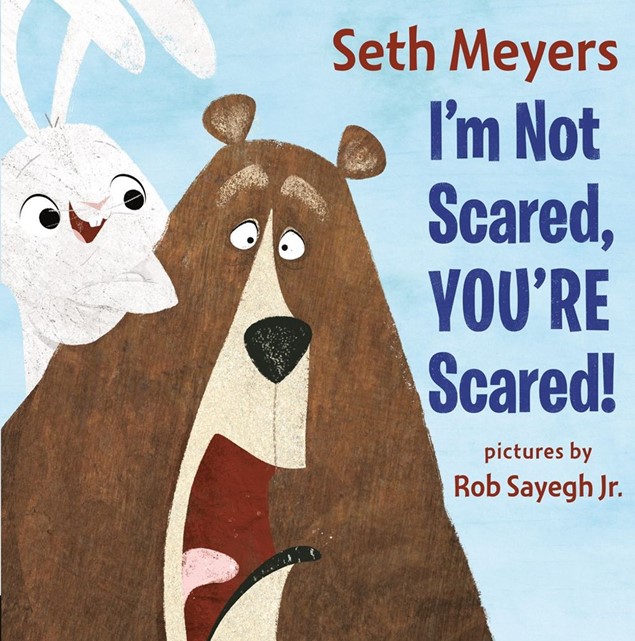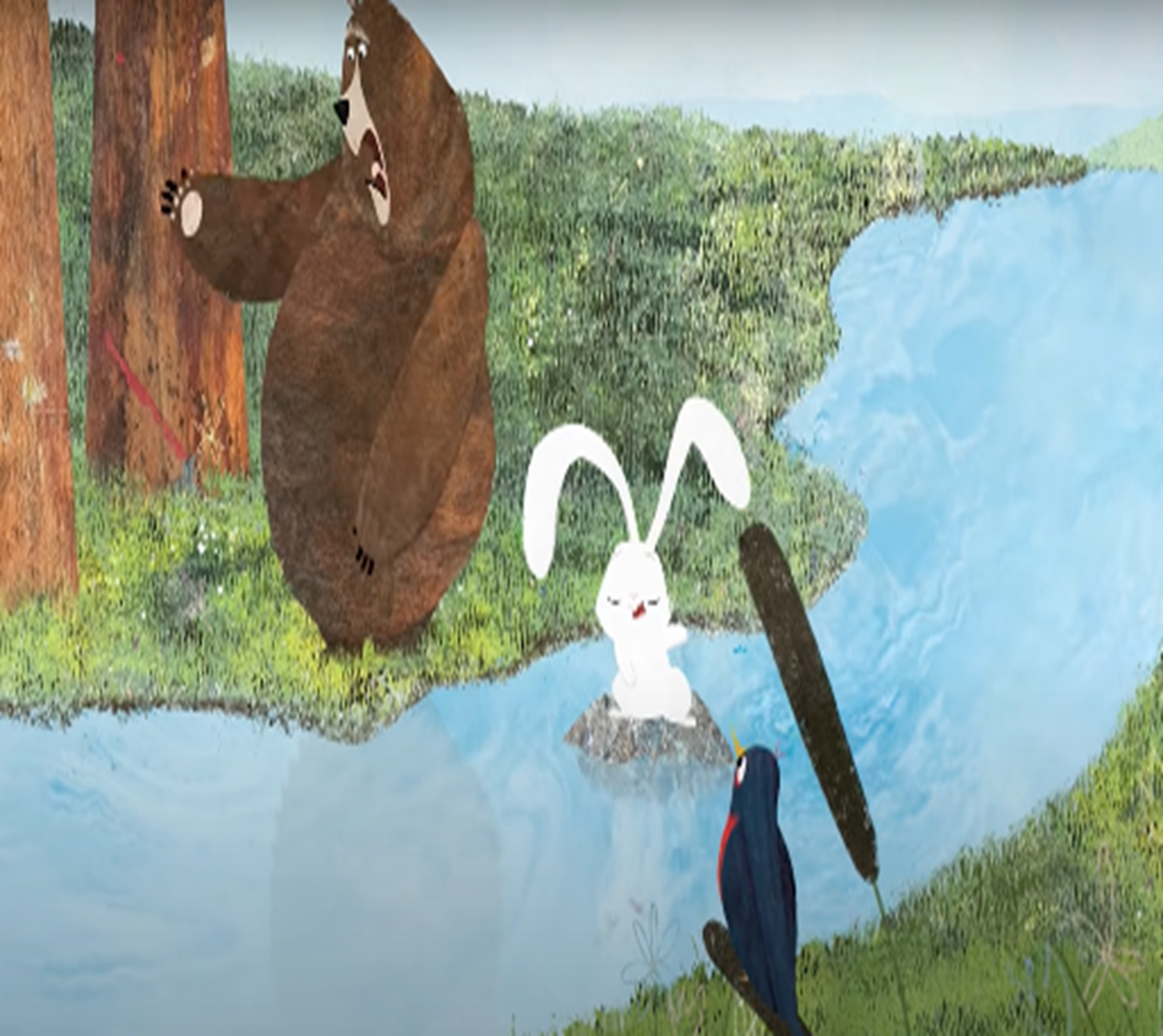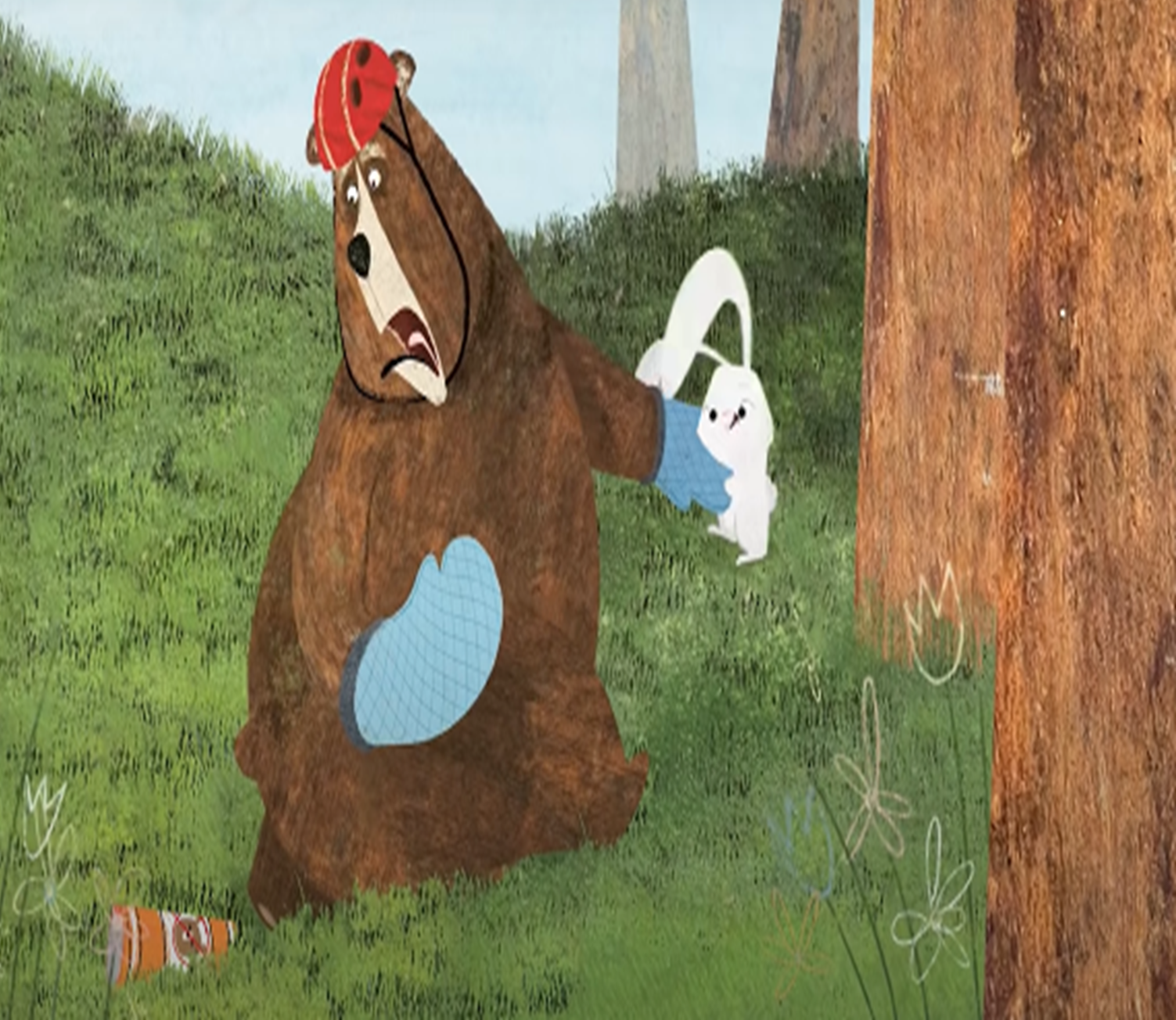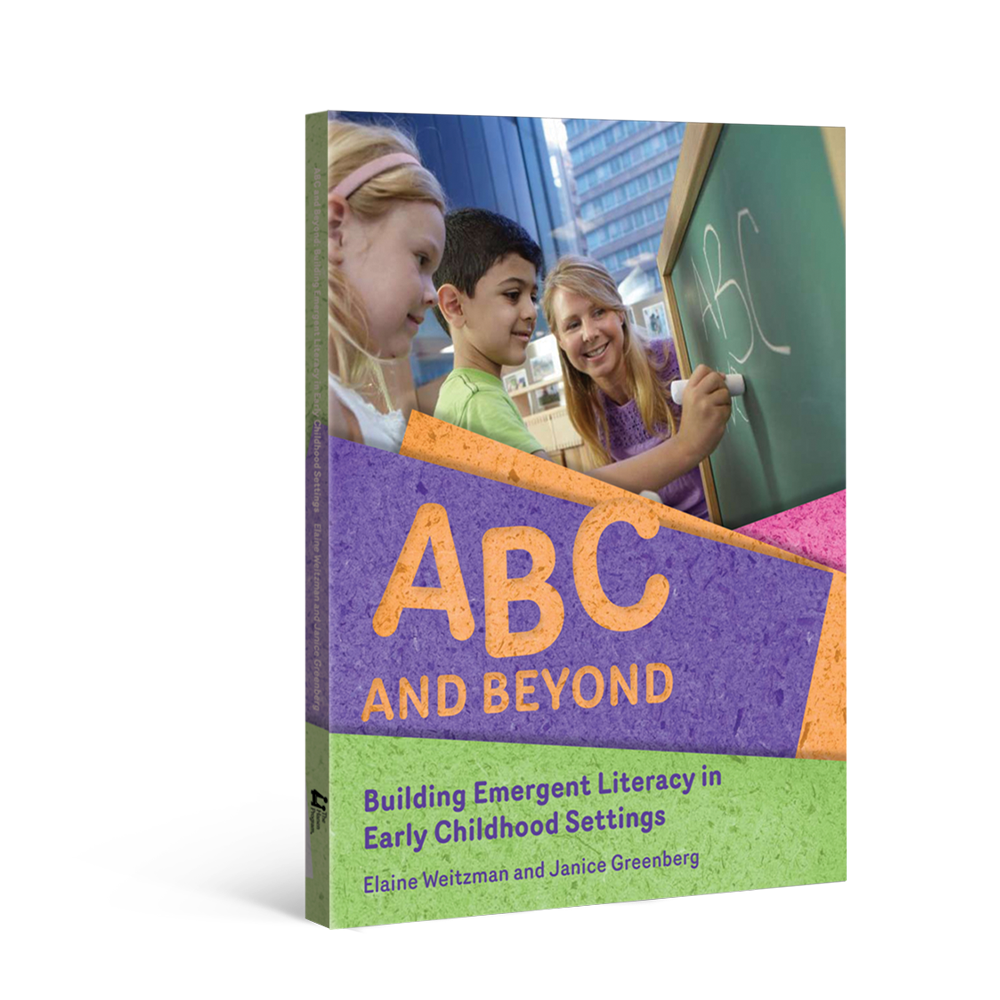This month's Book Nook topic is...
Developing Story Comprehension with
I’m Not Scared, You’re Scared!

Sharing books with children is a great opportunity to build reading comprehension, which involves helping children make sense of the story. In this Book Nook, we share research-based strategies for helping children understand the basic structure of a story. This includes understanding:
- who the characters are
- where the story takes place
- what the main problem is
- what actions are taken by the character(s) to solve the problem; and
- the resolution to the problem
Keep in mind that it’s best to read and talk about a story multiple times to help build understanding. Read on to learn how to build understanding throughout multiple readings!
The Book:
I'm Not Scared, You're Scared! by Seth Meyers
Why We Chose This Book
Who hasn’t been scared at one time or another? Bear sure has been! Although he doesn’t always want to admit it, Bear is scared of many things. However, when his friend Rabbit needs him, Bear must learn to face his fears – realizing he is braver than he thought! This story is great for building reading comprehension as it is well-written and has a clear storyline with only a few characters and a clear-cut problem.
The First Reading
The first time you read I’m Not Scared, You’re Scared, the goal for the child is to get an overall sense of the story from the words and the pictures. This means understanding the story’s key elements. CSPAR (pronounced caspar) is an acronym used to represent key elements that are present in most stories – the Characters, the Setting, the Problem, Actions taken to solve the problem and the Resolution.
During the first reading, you can pause to point out different elements of CSPAR, such as:

- Characters: You can begin with the front cover. After reading the title, you could point to the illustration and say, “This is Bear. He is the main character in the story.”
- Setting: You can talk about where the story takes place. As you read, you could add: “This story takes place outside, where Bear and Rabbit go on an adventure.”
- Problem: As you read, you will uncover the problem in this story. Bear’s friend Rabbit nearly falls through a bridge on their adventure and only Bear can help him! You could say: “Uh-oh, Rabbit has fallen – that’s a big problem. Bear needs to help him!”
- Action: You can highlight the actions that Bear takes to help Rabbit. For example: “Bear is taking action by running to save Rabbit! He is even going through the forest he was so scared of.”
- Resolution: At the end of the book, you can talk about the resolution. You could say, “Bear solved the problem when he lifted Rabbit to safety!”
When you pause to discuss these different CSPAR elements in the first reading, avoid interrupting the flow of the story by keeping your comments and conversations short. This will help the child get an overall sense of the story. In later readings, once the child is familiar with the storyline, you can have longer conversations about the CSPAR elements.
Next Reading

Now that the child is familiar with the story, you can highlight and label the CSPAR terms even more. It’s okay if these terms are new to the child. Here are some examples of how to label and explain the CSPAR elements:
- If the child points to or makes a reference to Bear, you could say, “Bear is the main character in this story – the story is all about him.”
- If the child shows interest in the pictures by commenting on the tall trees or the big, grassy hill, you could say, “Yes, this is part of the setting, which is where the story takes place. In this story, the setting is outside, where Bear and Rabbit are going on an adventure.”
- If the child comments about how Rabbit falls through the bridge, you could highlight, “That is a big problem! Rabbit is stuck – she needs Bear’s help.”
- On the next few pages, Bear retraces his steps to get to Rabbit. If the child talks about how Bear runs through the stream he was scared of, you could say, “Yes, he is taking action by facing his fears to go save Rabbit!”
- After reading the story, you could say: “Bear saved Rabbit. This was the resolution.”
Comments like these will ensure the child has a good understanding of the main events of the story. Now, they are ready for a deeper understanding in the next reading.
Later Readings
Once you have shared the book with the child a number of times, you can encourage the child to think and talk about the story structure themselves by asking a question or two. You might ask:
- "Who is the main character in this story?"
- "What is the setting in this story?"
- "What is the problem the main character must solve?"
You can also use comments to help develop a more thorough understanding of the story. For example, you could say:
- "I am thinking the main character, Bear, would prefer to stay home."
- "I’m wondering how Rabbit is feeling when she falls through the bridge and needs help."
- "Let’s read all about Bear’s actions to try and save Rabbit."
Using the CSPAR framework is a wonderful way to help the child develop story comprehension. Remember to only ask a few questions during each reading and balance your questions with comments so the reading is fun, and the child does not feel as though they are being tested. Pause after asking a question to give the child time to process and respond.
Helping children consider the CSPAR elements in this story will also help them think about these elements in other stories you share.
Happy reading!
More Resources
The strategies in this Book Nook post are drawn from Hanen’s practical, research-based guidebooks for building emergent literacy. Explore the links below to learn more about how these guidebooks can support you.
For Parents I'm Ready! guidebook
I'm Ready! guidebook
For Educators ABC and Beyond guidebook
ABC and Beyond guidebook
